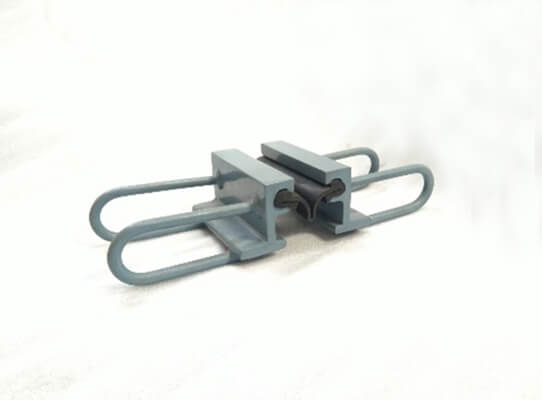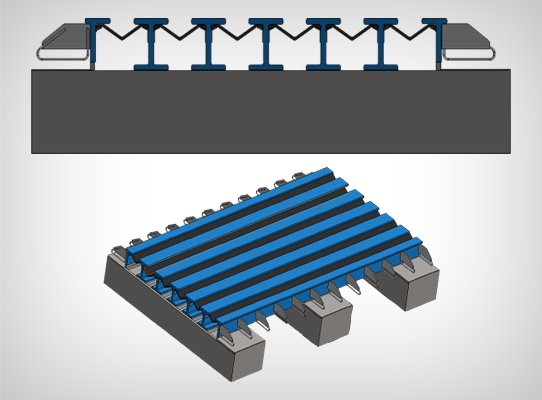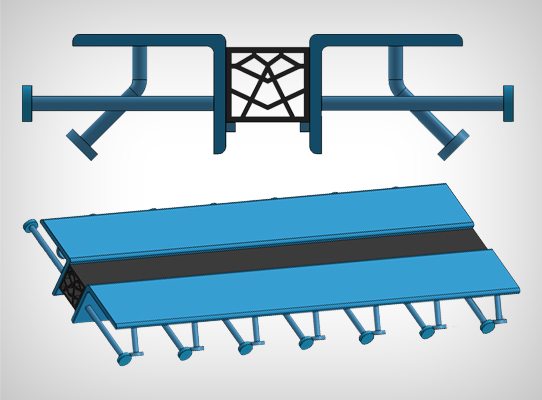Expansion Joint
The first and foremost requirement of an adequate joint design is that the joint should be capable of accommodating all movements of the deck viz. translation and rotation In the process, it must not cause unacceptable stresses either in the joint itself or in the structure by way of restrain. Further requirement is a low noise level especially in an urban environment. The replacement of an expansion joint is always combined with a traffic interruption - at least on the affected lane. Therefore, expansion joints should be robust and suitable for all loads and local actions under all weather conditions. The replacement of all wearing parts should be possible in a simple way.
Types of Expansion Joint:
The main types of Expansion Joint are mentioned below:
-
Single Strip Seal Joint
This joint consists of two edge beams with anchorages and an elastomeric sealing element held firmly in the housings of edge beams that guarantee the water tightness of the joint. The maximum gap between the edge beams at road surface when the joint fully opens due to maximum contraction of deck shall be limited to 80 mm for comfortable passage of the traffic. The edge beams protect the adjacent bridge deck concrete from damage due to vehicular impact and also transfer the vehicular load to the deck structure through robust anchorage system.
-
Modular strip seal joint
The modular strip box seal expansion joint divides the total movement capacity into several smaller gaps. The joint consists of two edge beams. one or more central separation beams or lamellae oriented transversely to the traffic direction forming the load carrying elements, and cross beams supporting individual or multiple central beams to transfer the loads to the bridge deck through the anchorage system Centre beams and transverse support cross beams are connected by resilient or shock absorption system to dampen dynamic loading, thus reducing the forces transmitted to the structure and anchorages. The shock absorption system accommodates vertical and transverse movements apart from longitudinal movement.
-
Compression Seal Joint
This Joint consists of steel armoured nosing at two edges of the joint gap suitably anchored to the deck concrete and a preformed chloroprene elastomeric seal foam joint sealer compressed and fixed into the joint gap with special adhesive binder. The seal is supposed to remain in continual compression due to pressing of the seal wall against Joint faces throughout the service life to ensure that the joint remains water tight and capable of repelling debris.
-
Finger joints
The cantilever-toothed joint also called finger joint, is a very robust construction but with several disadvantages. The deformation capacity in the crosswise direction is severely limited and vertical deformations of the joint can prejudice traffic safety. To accommodate small vertical deformation without hazard, the free finger ends should be rounded. Finger joints with supported fingers have proved to be not as good as with cantilever fingers.





